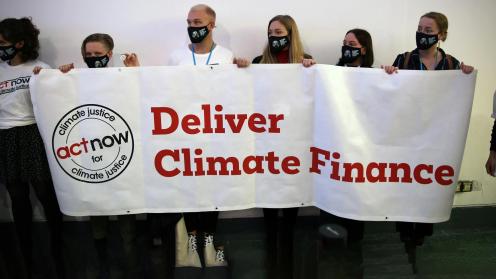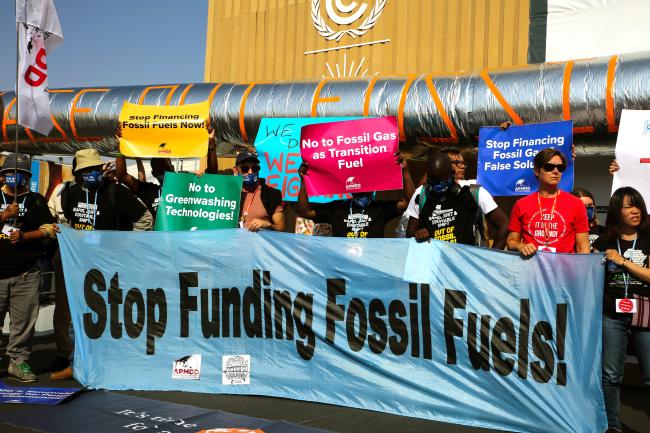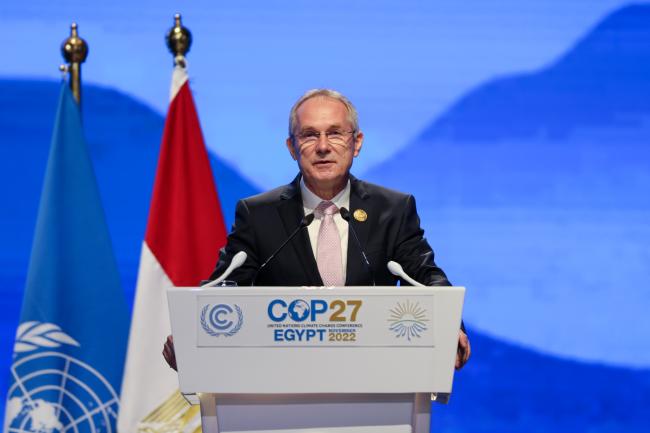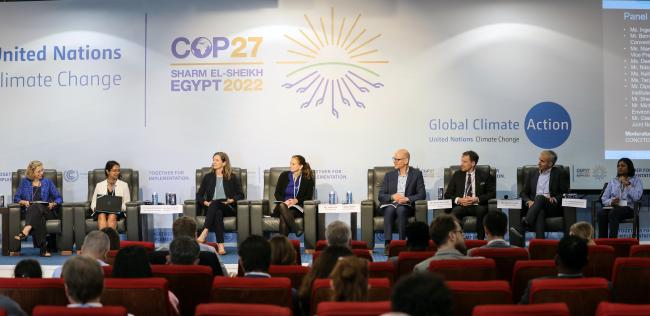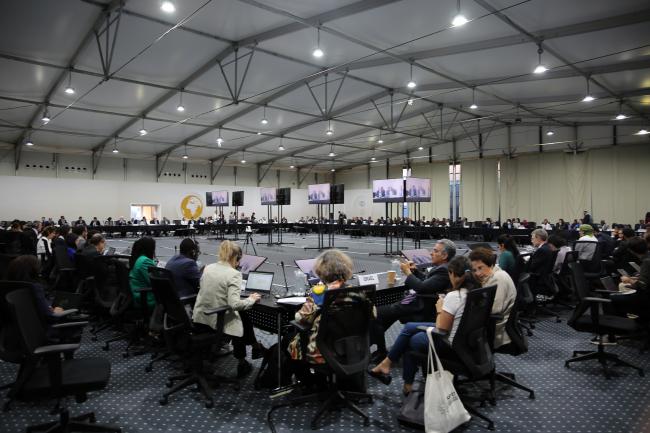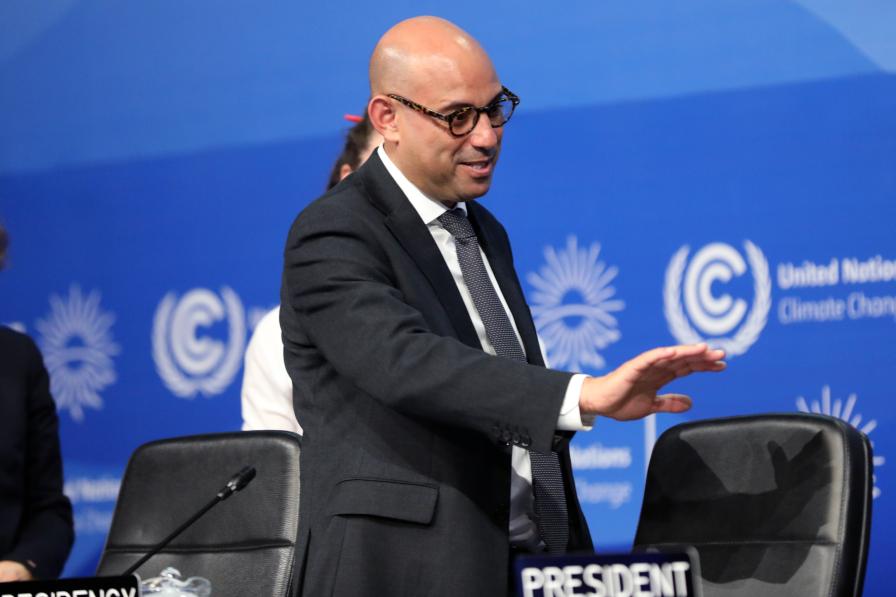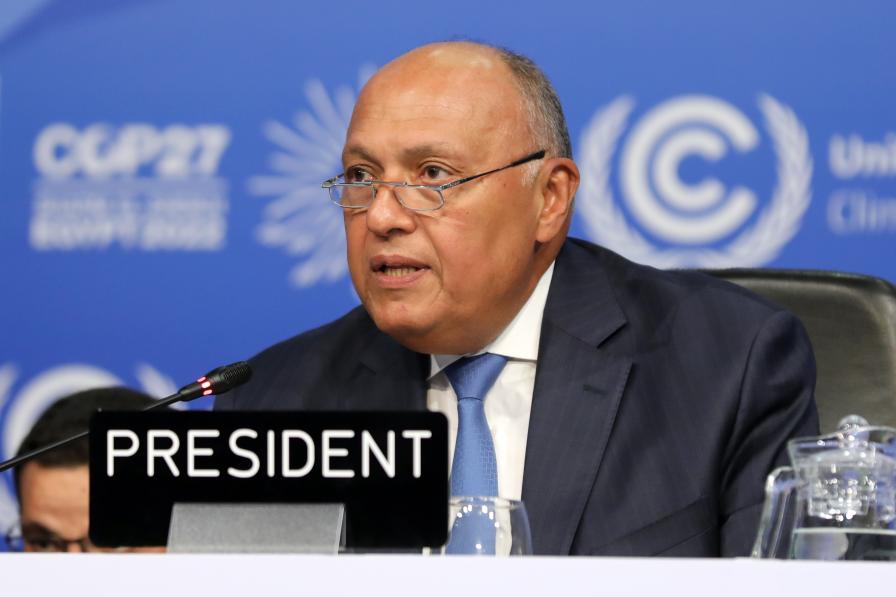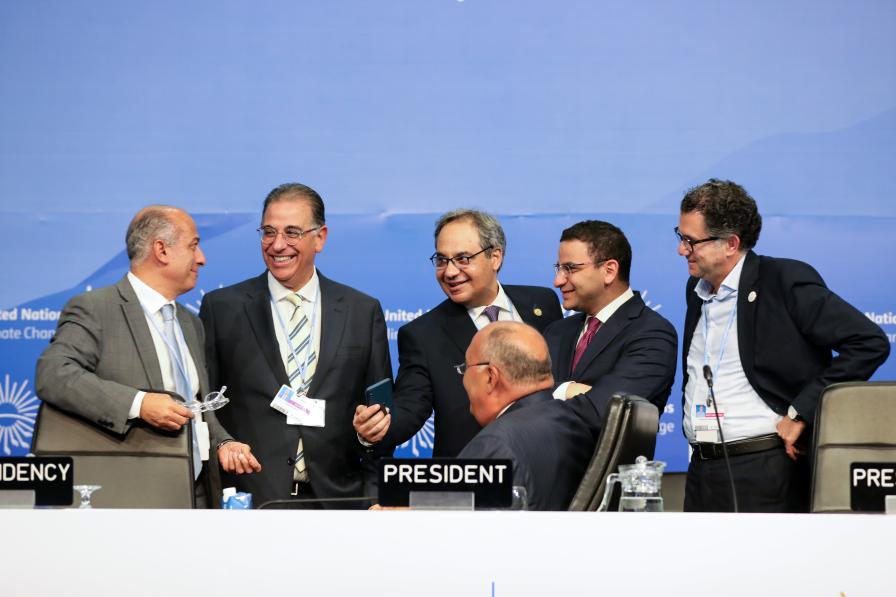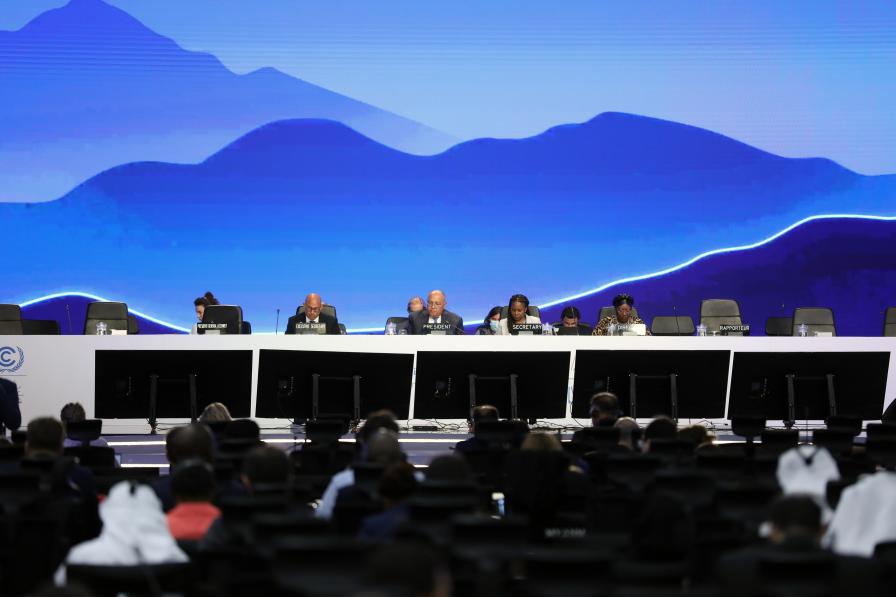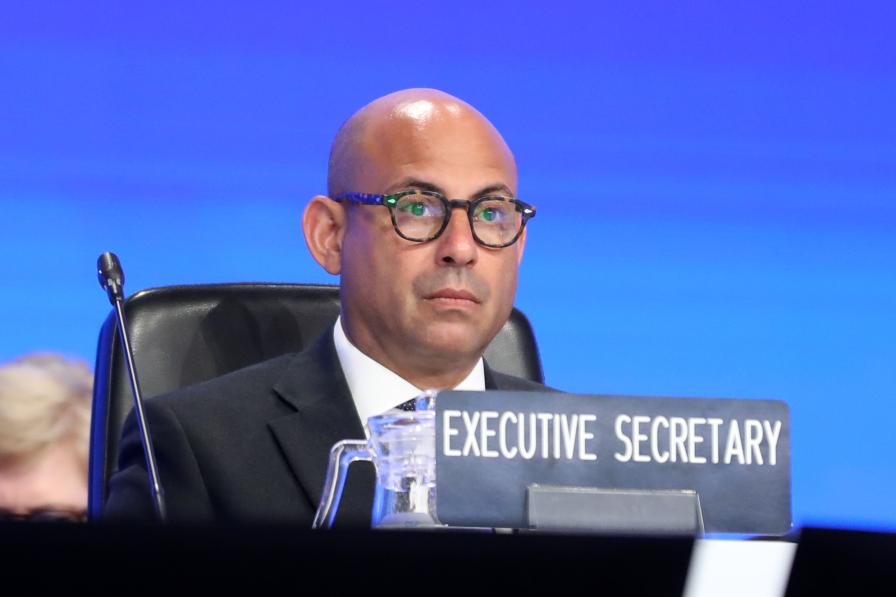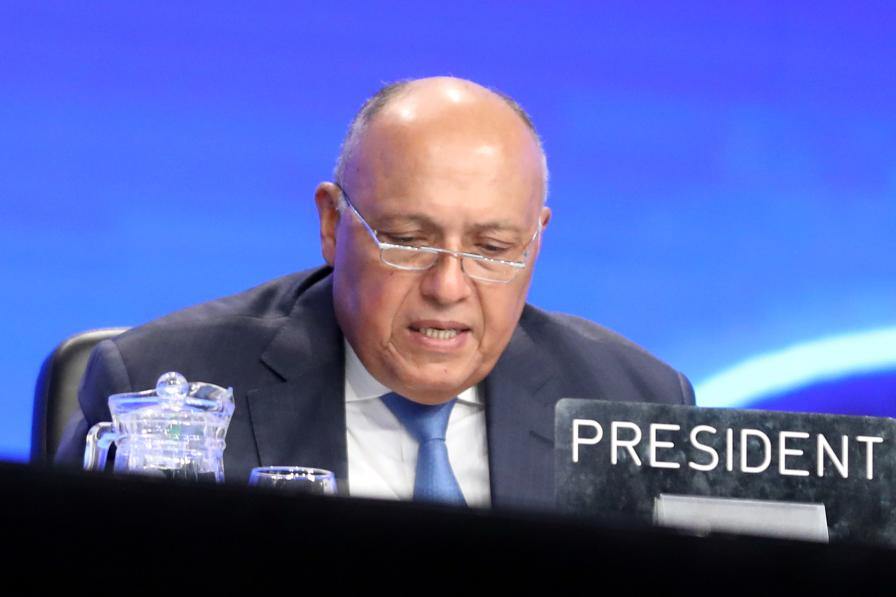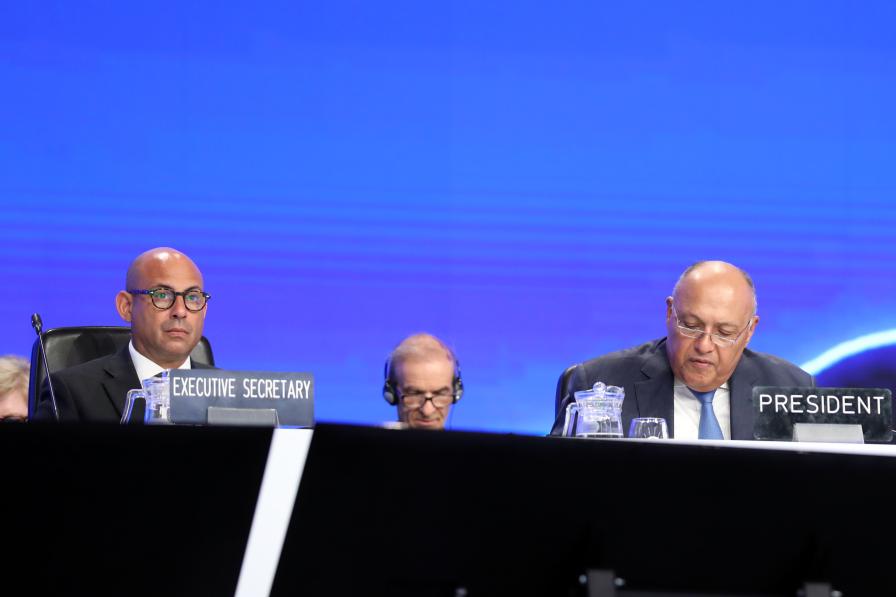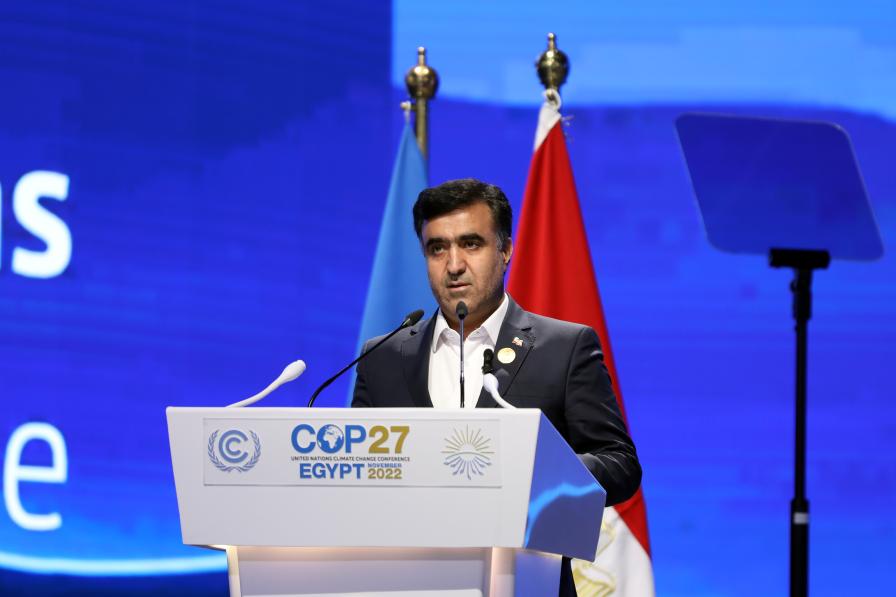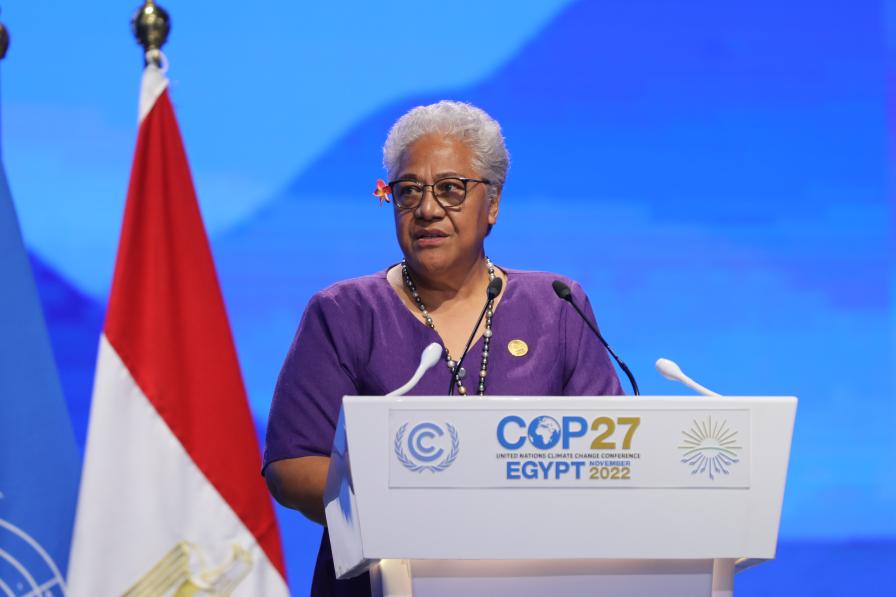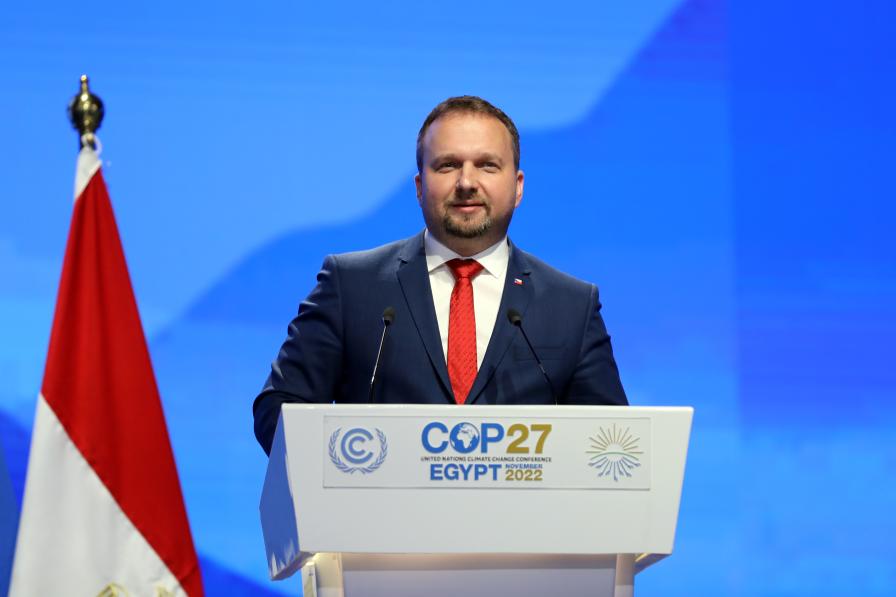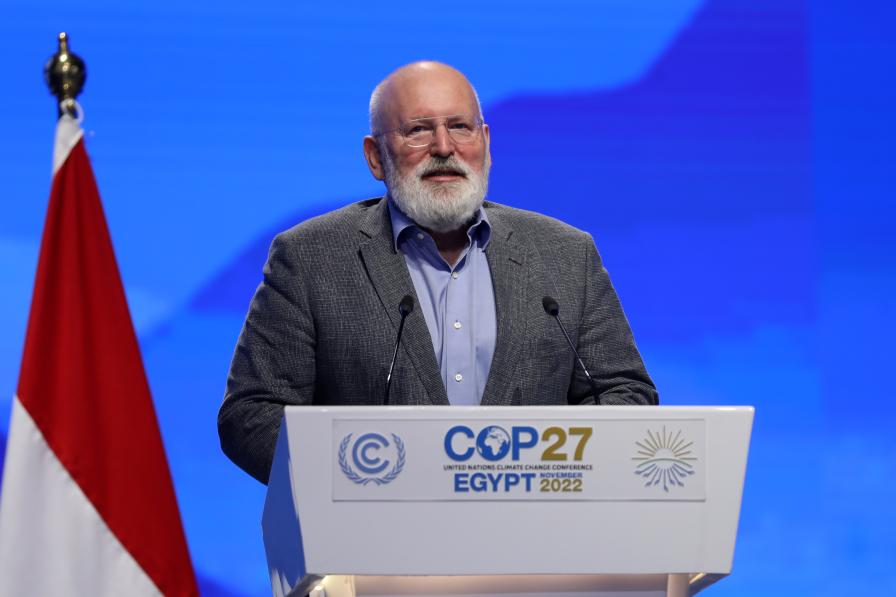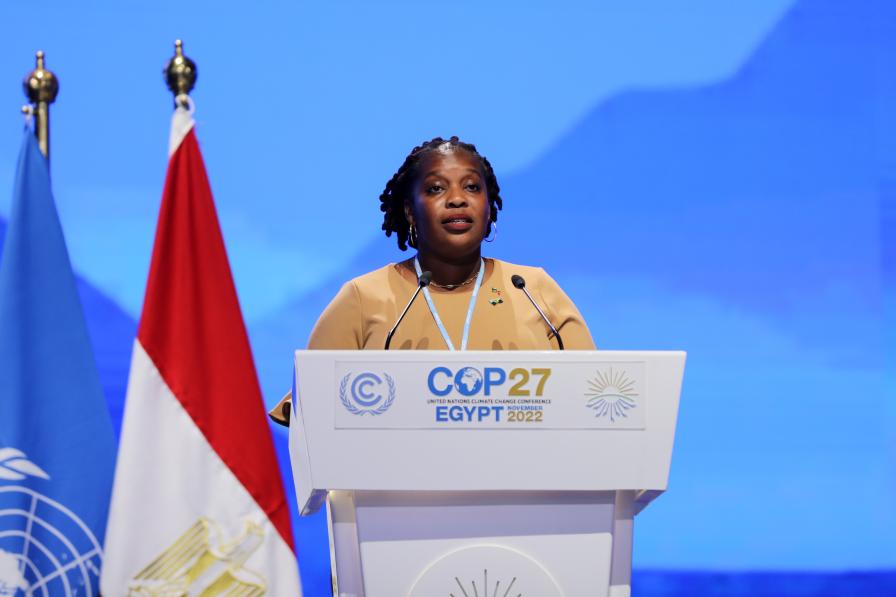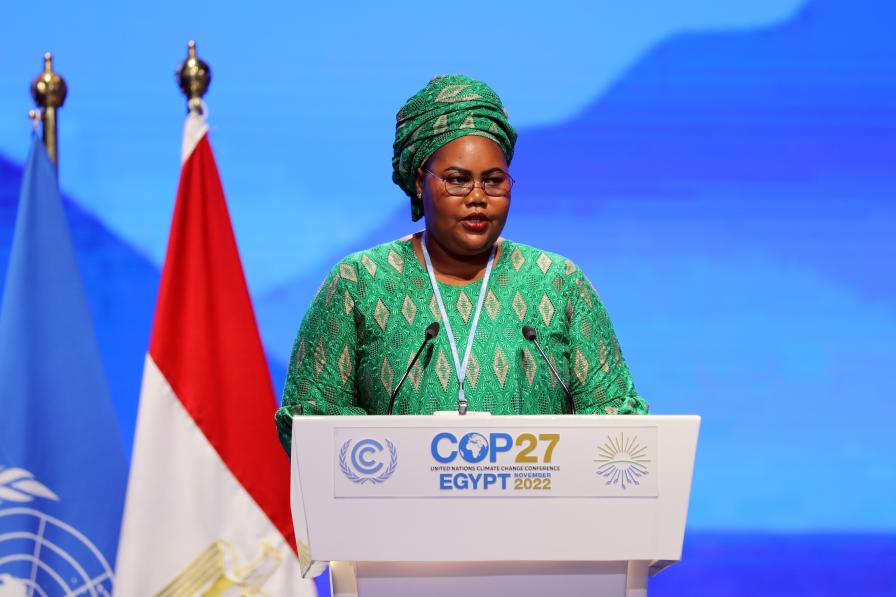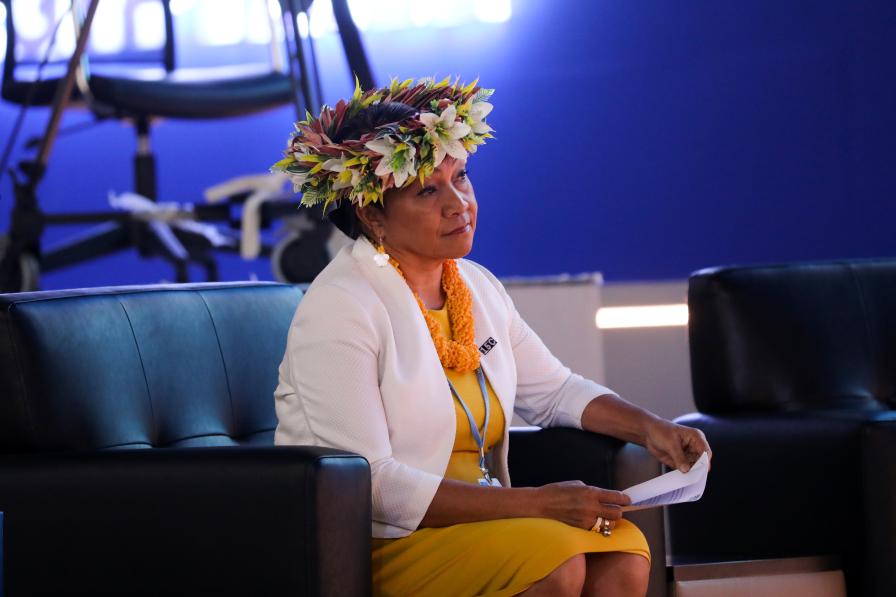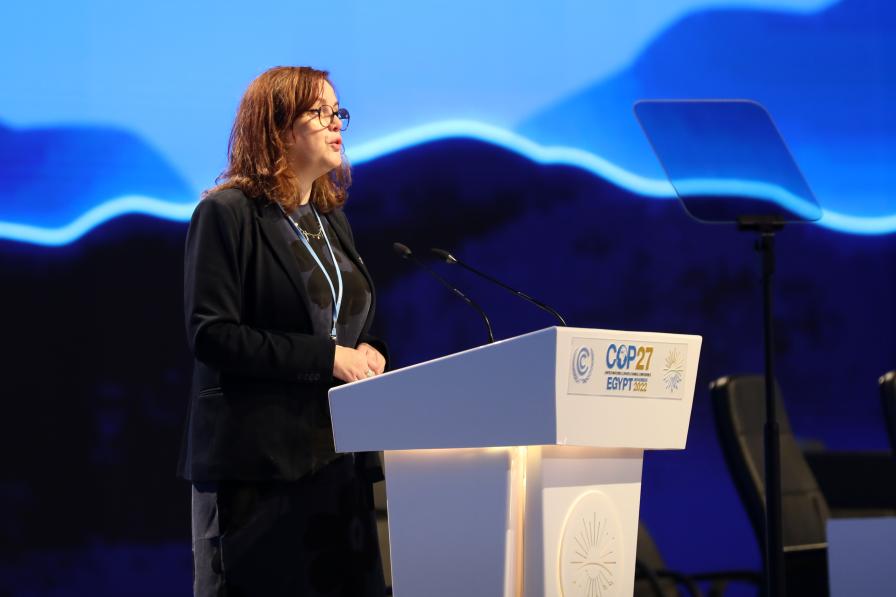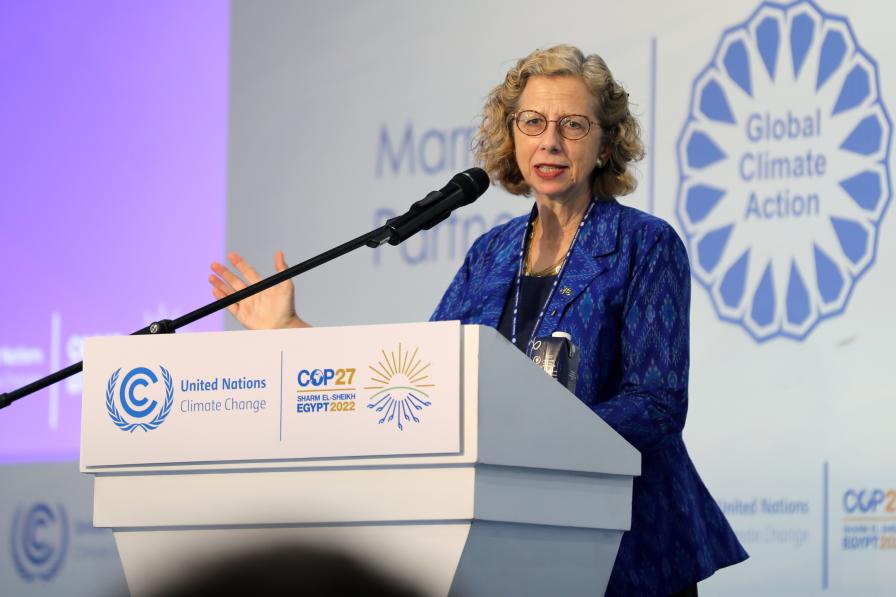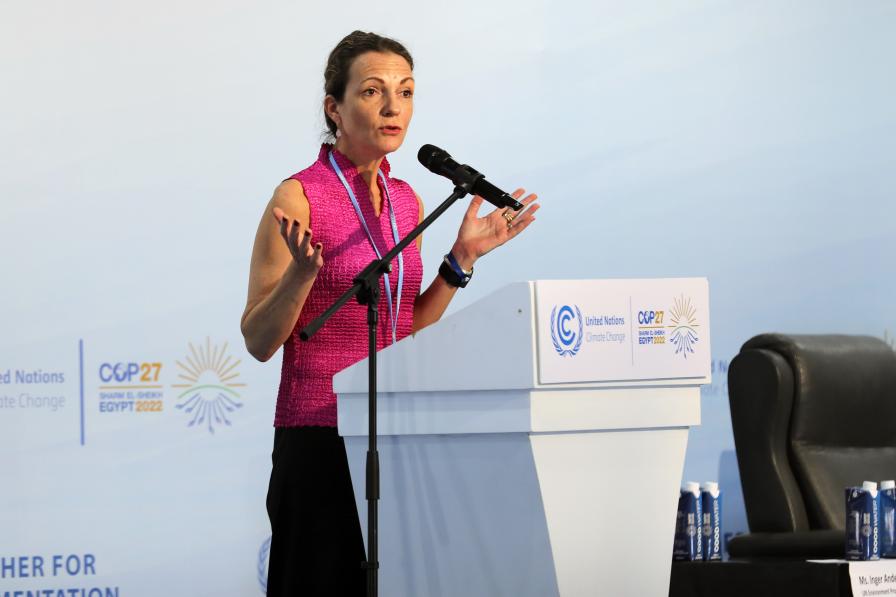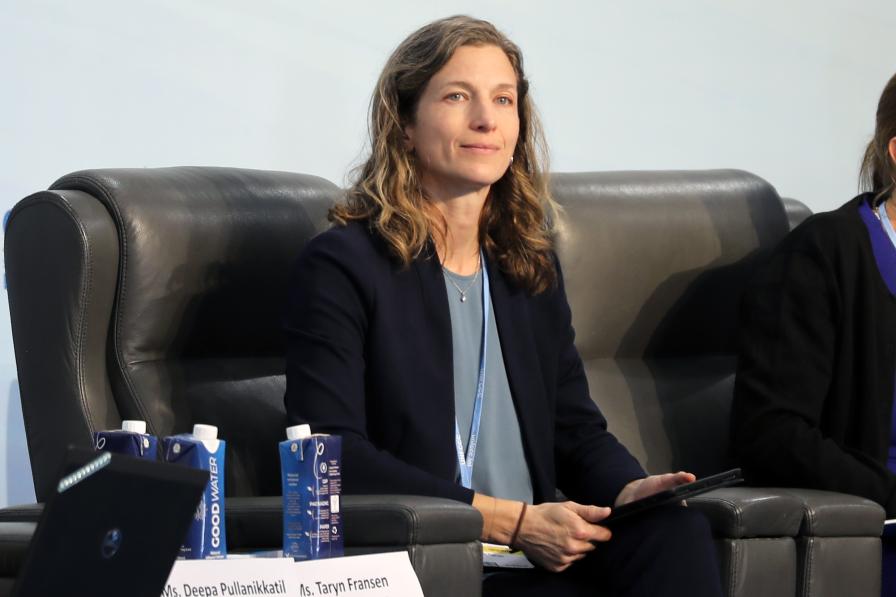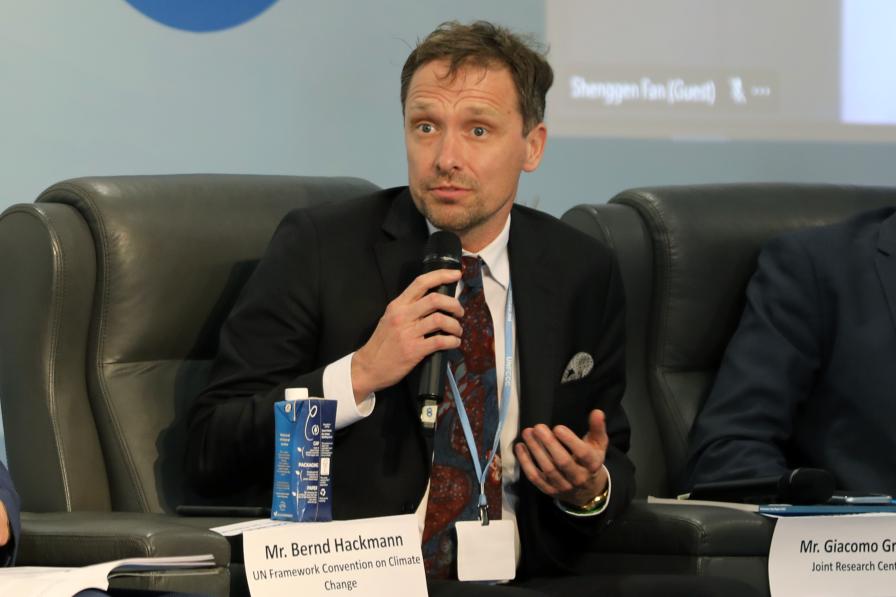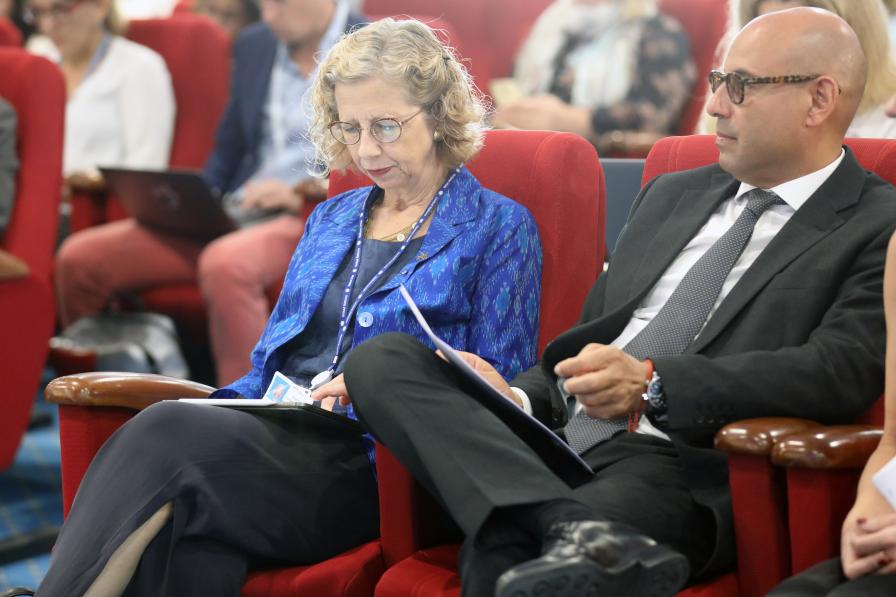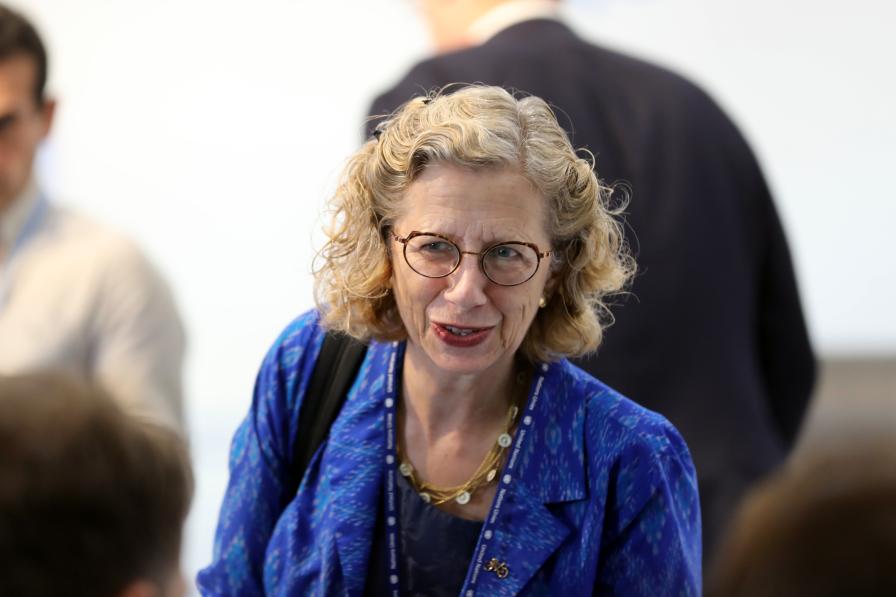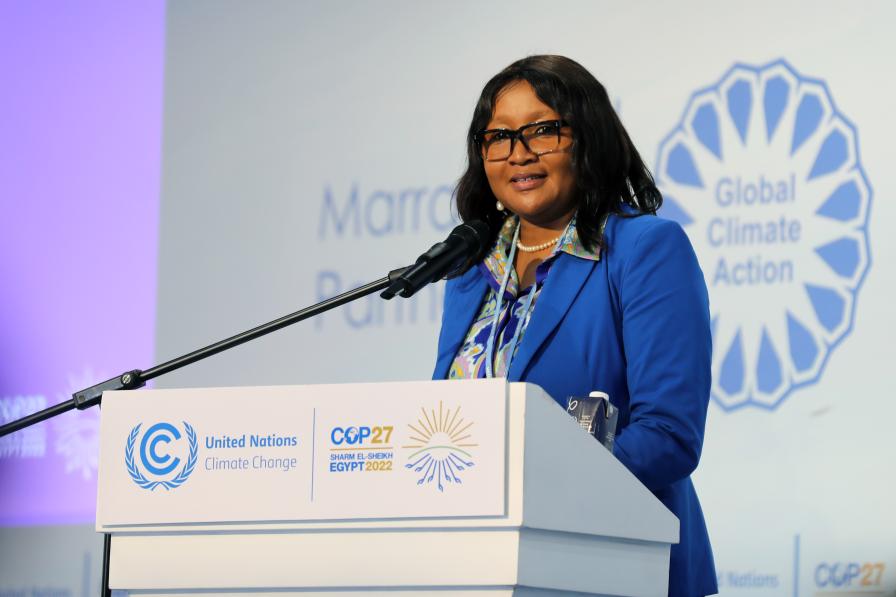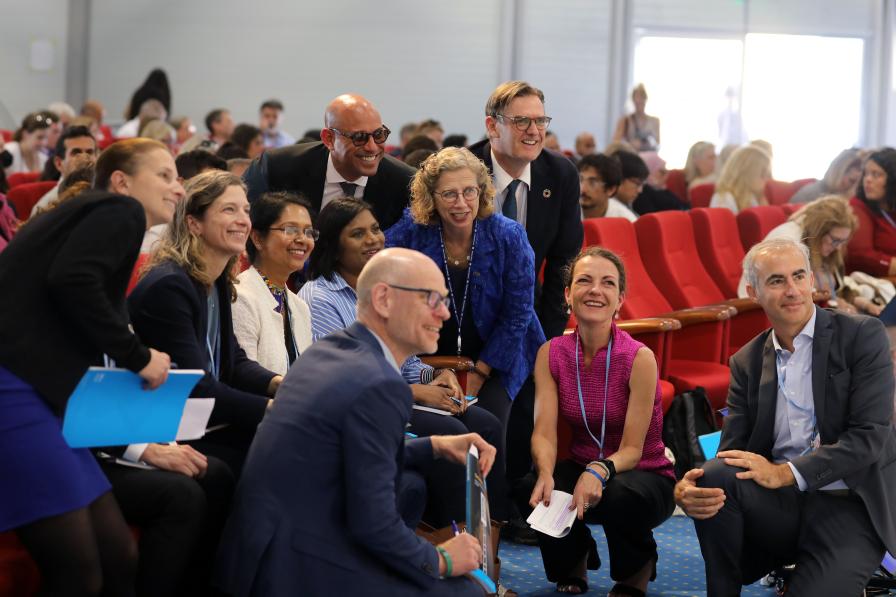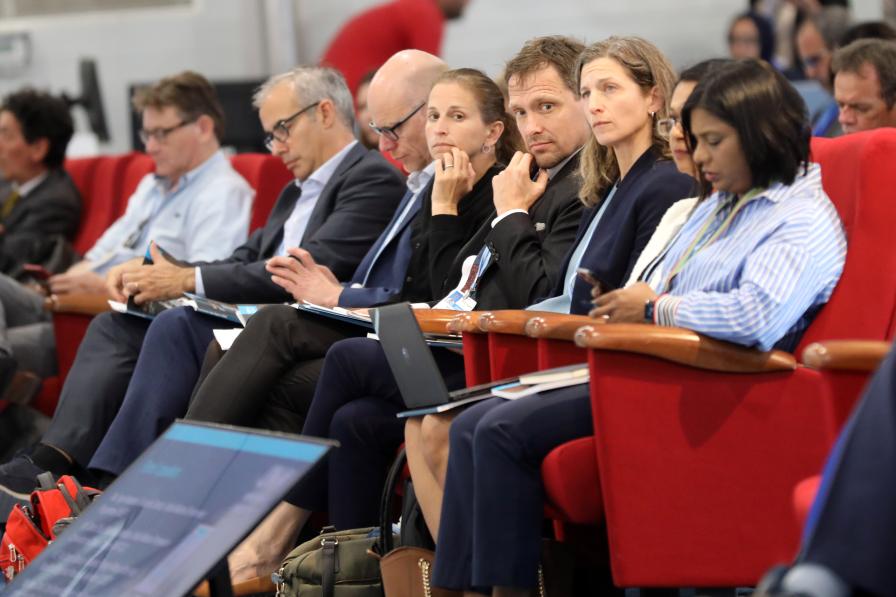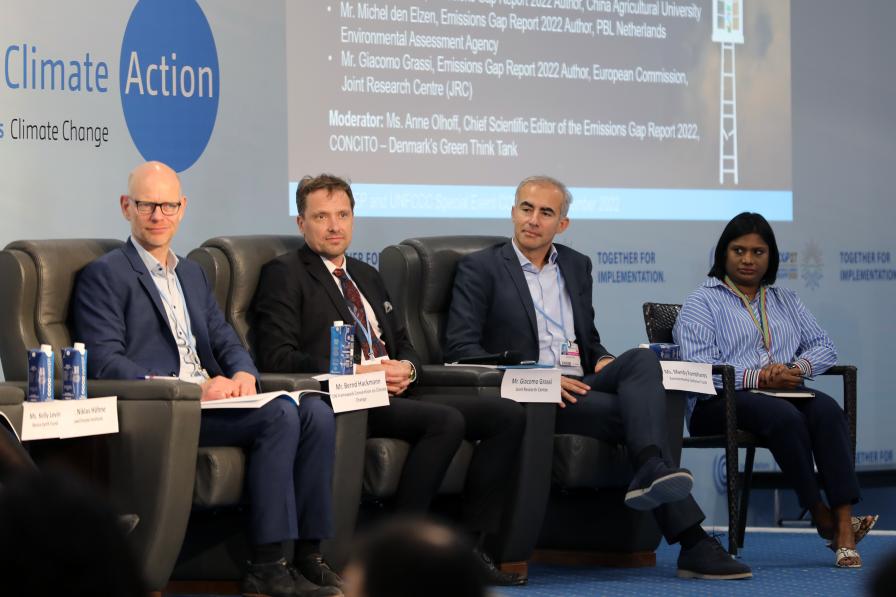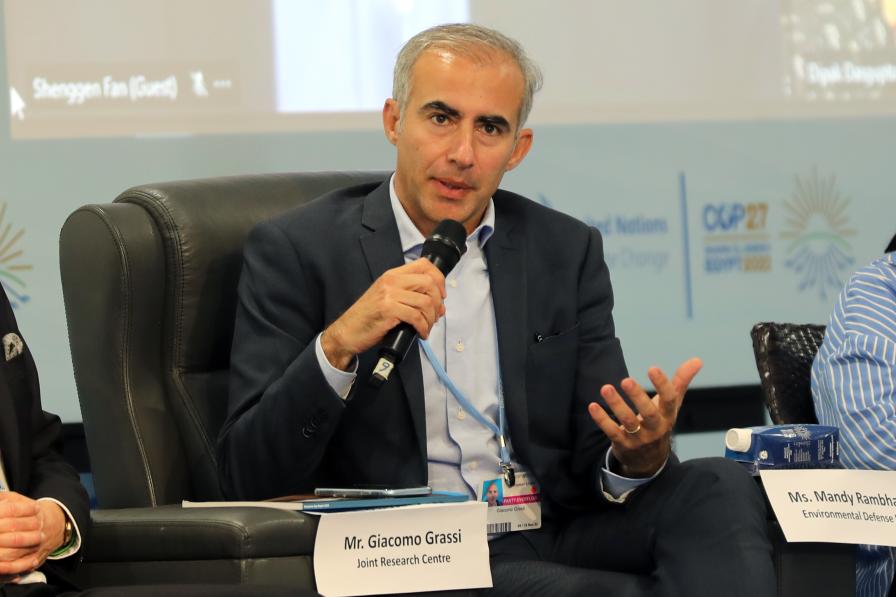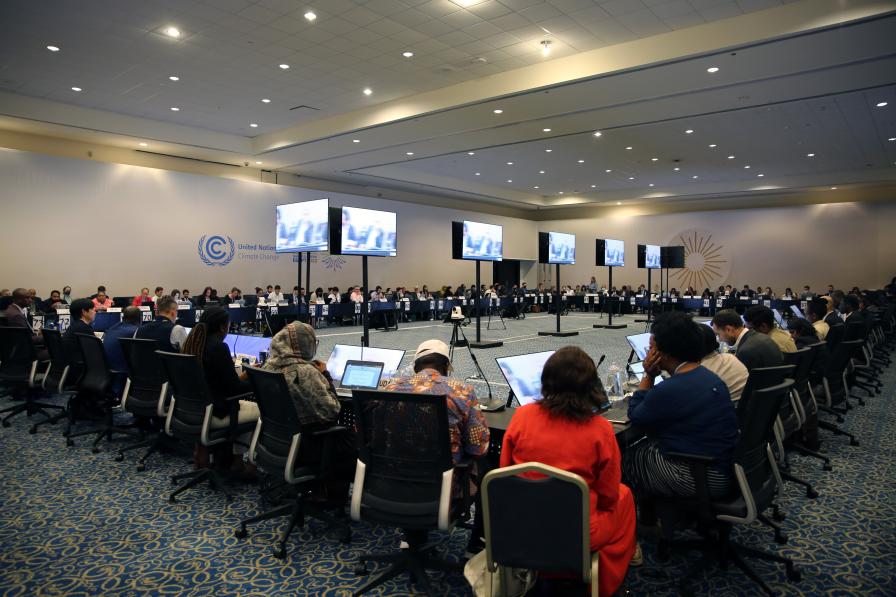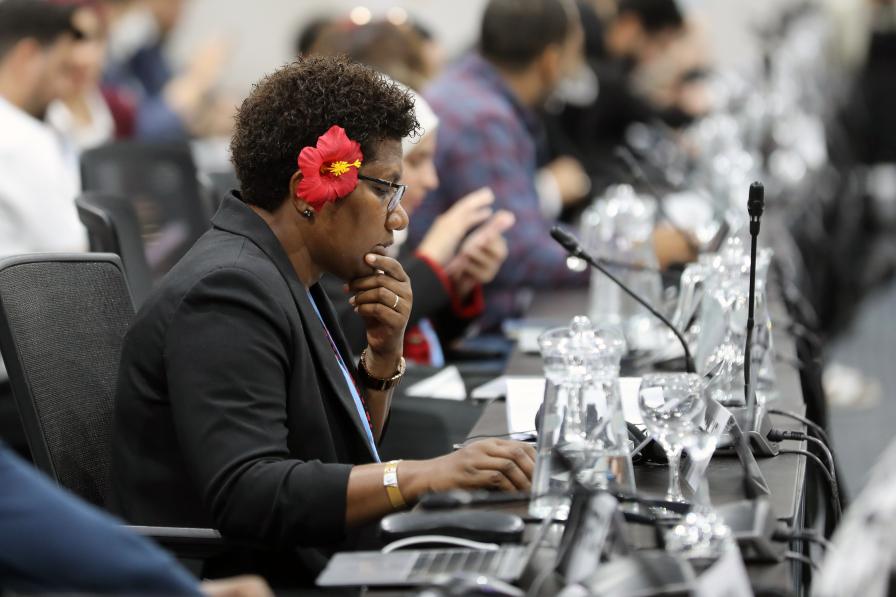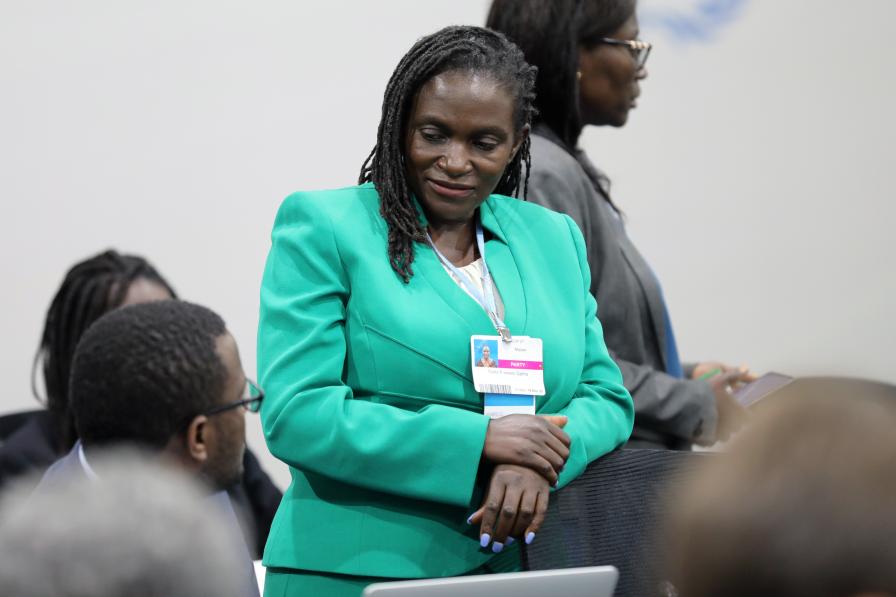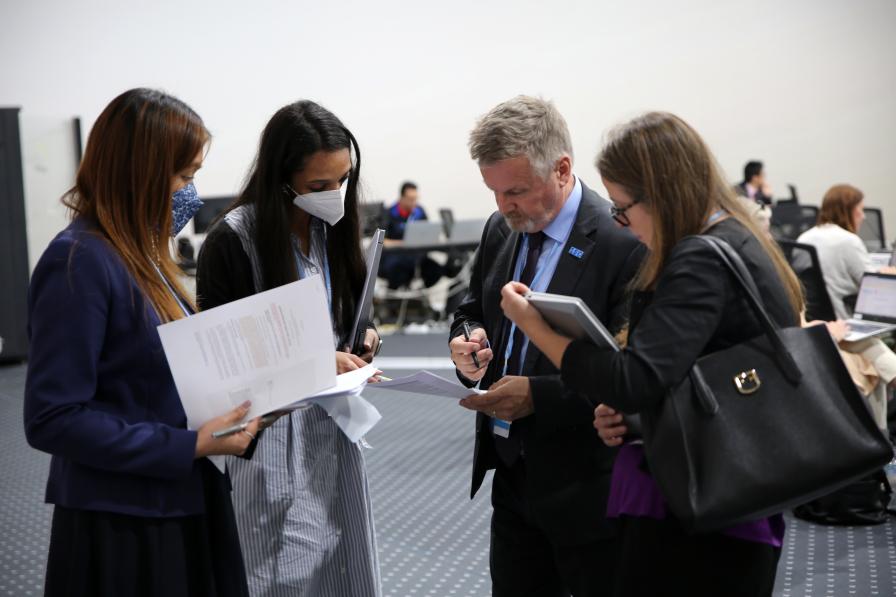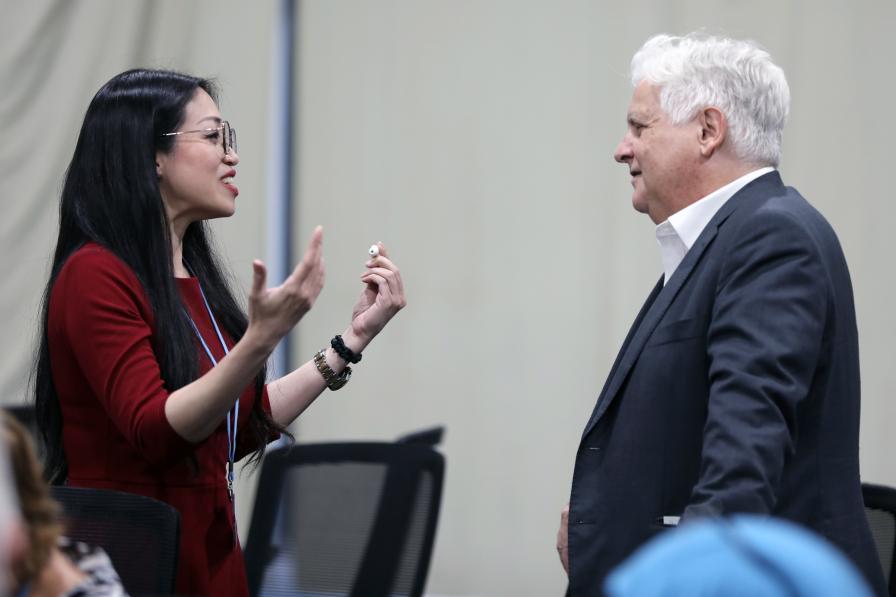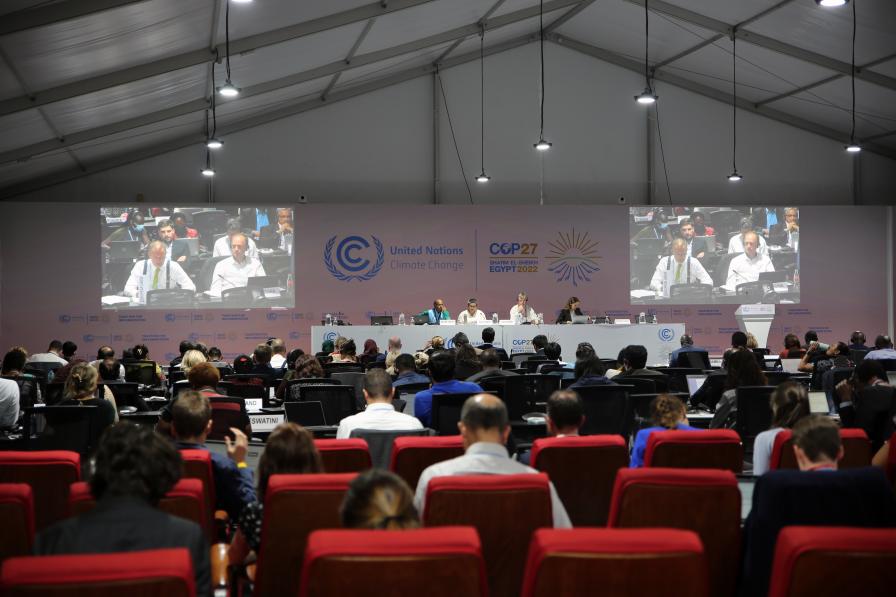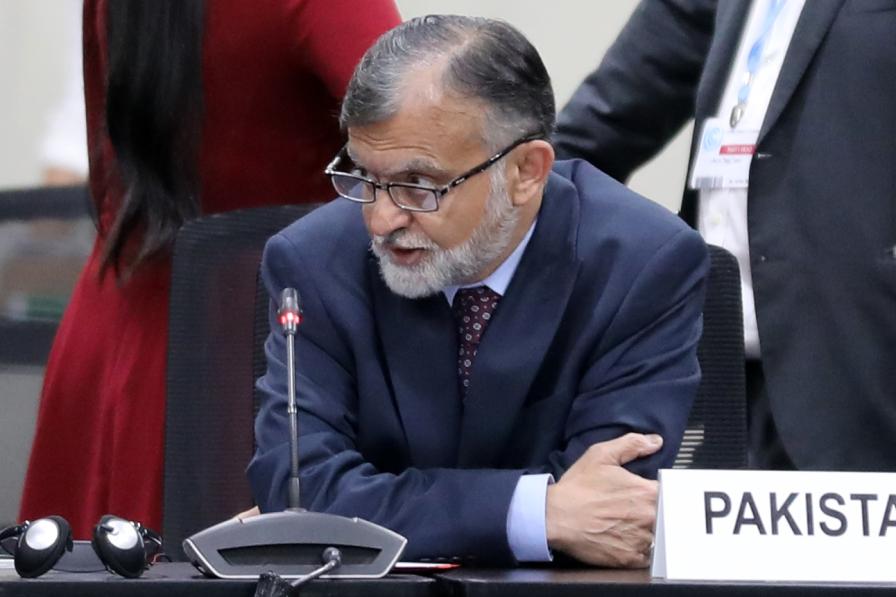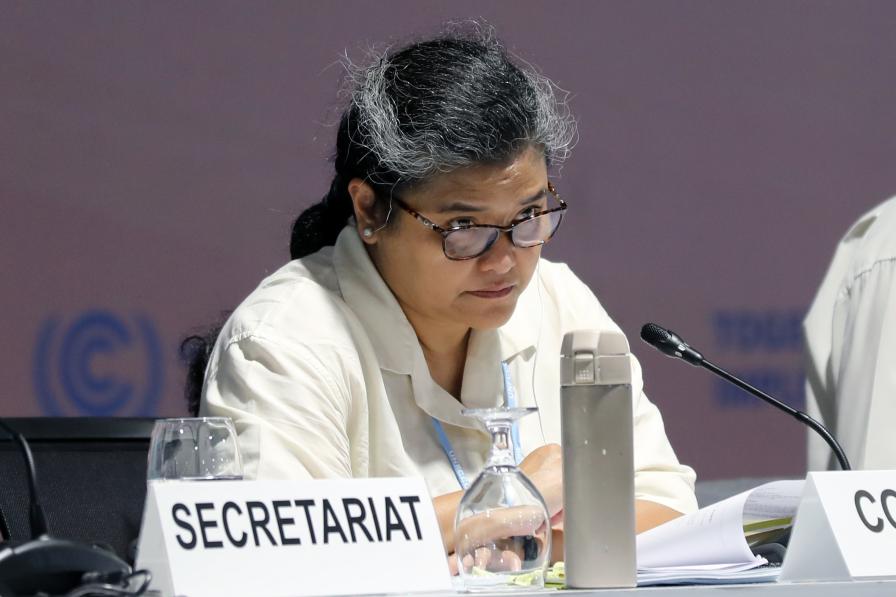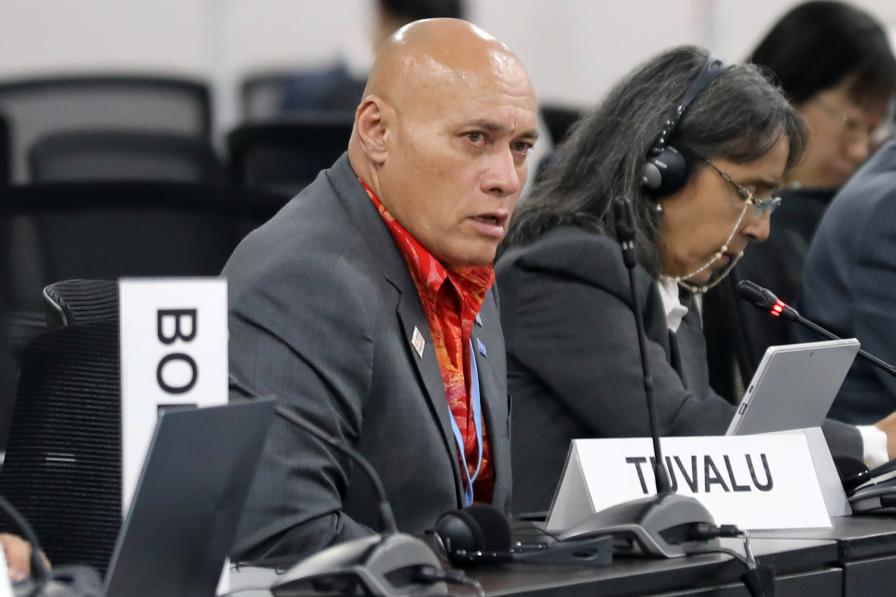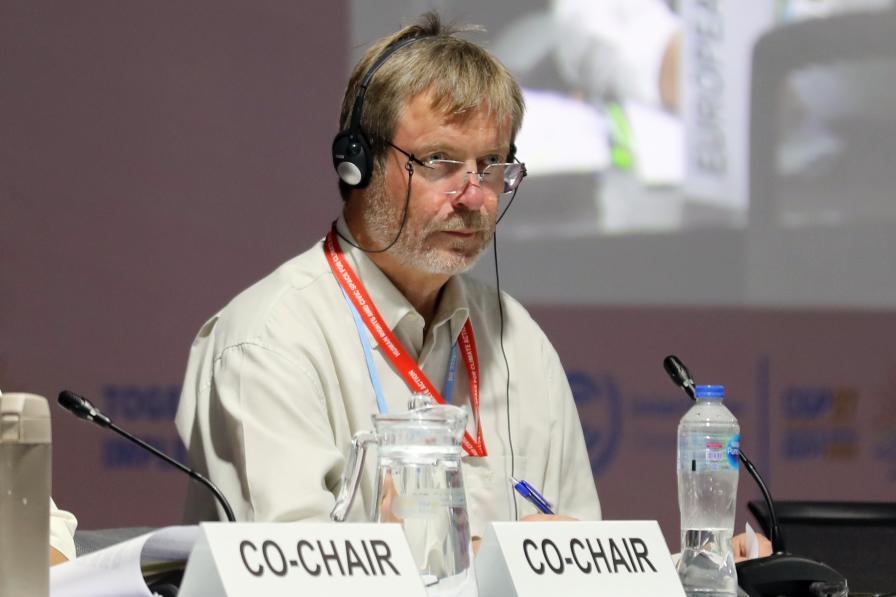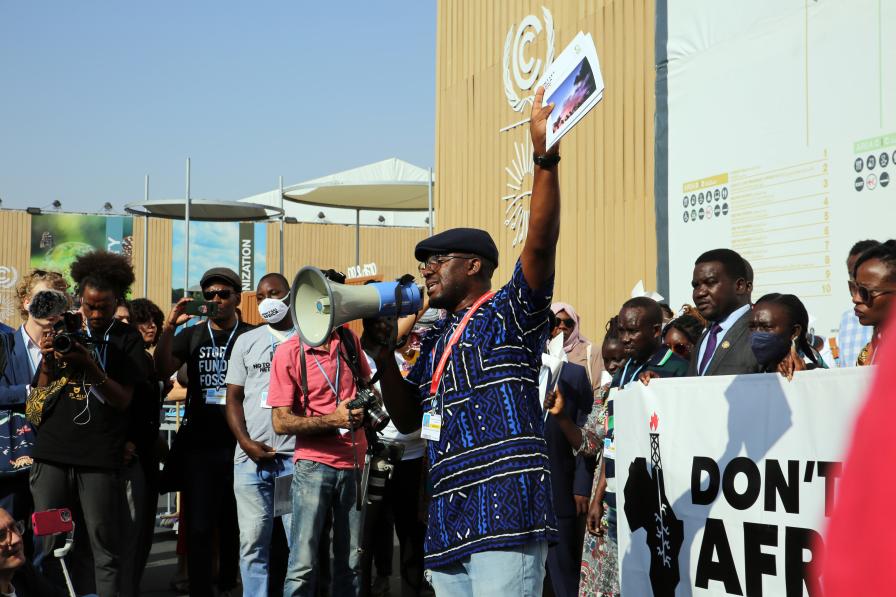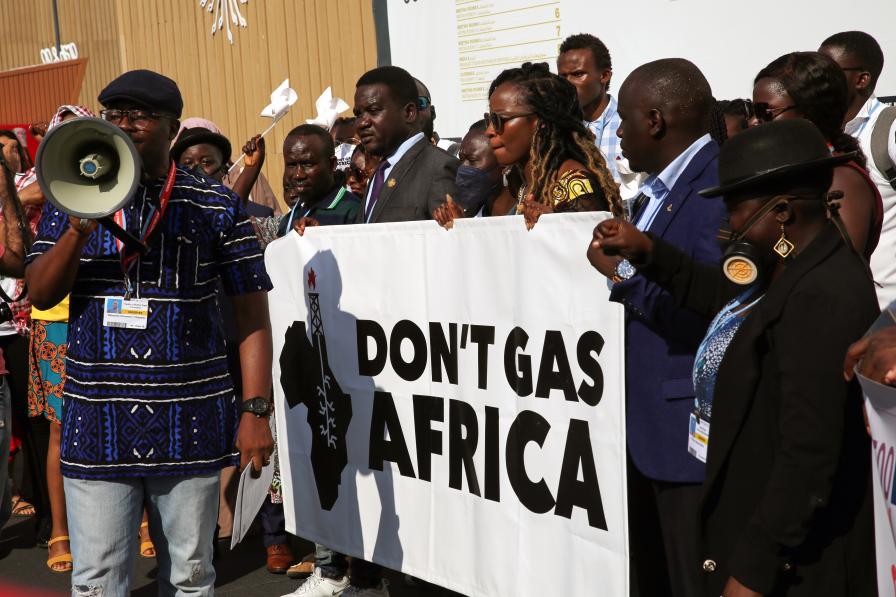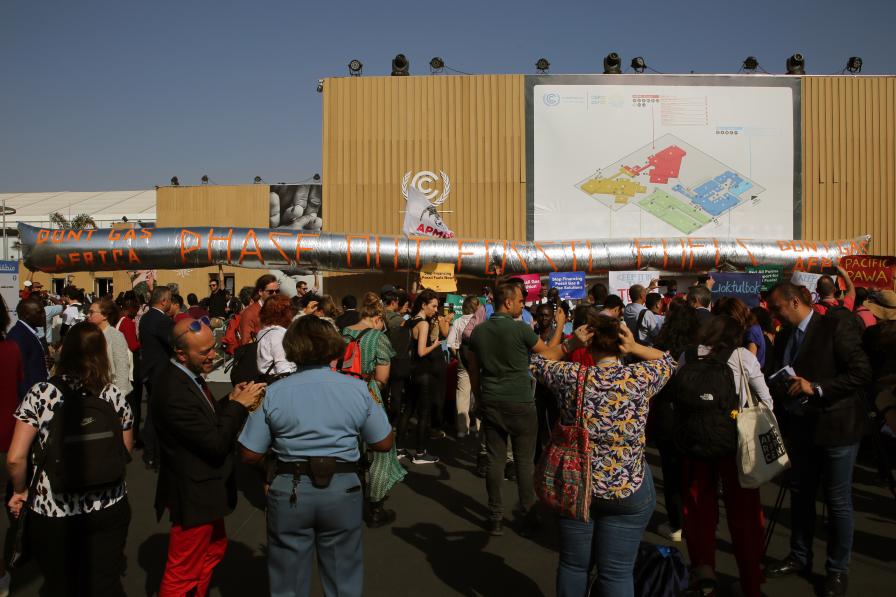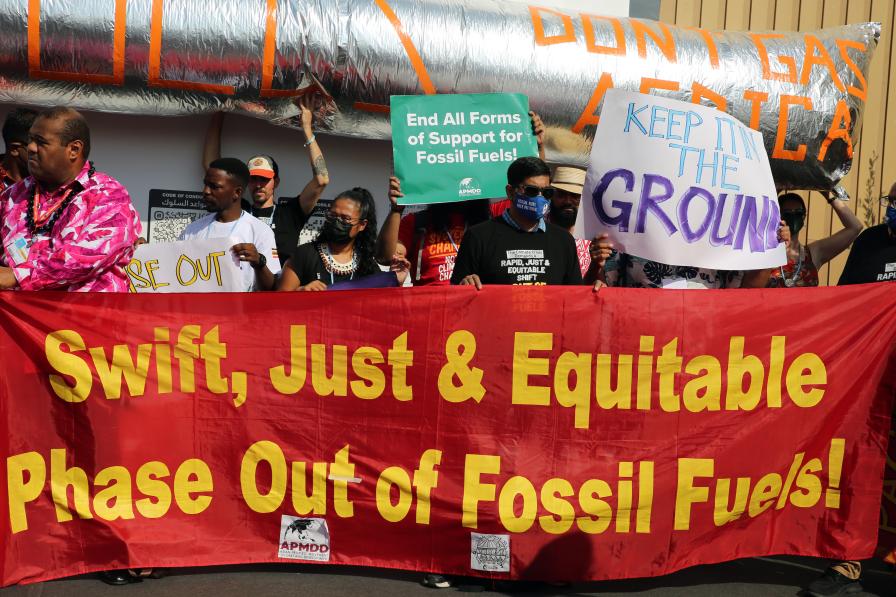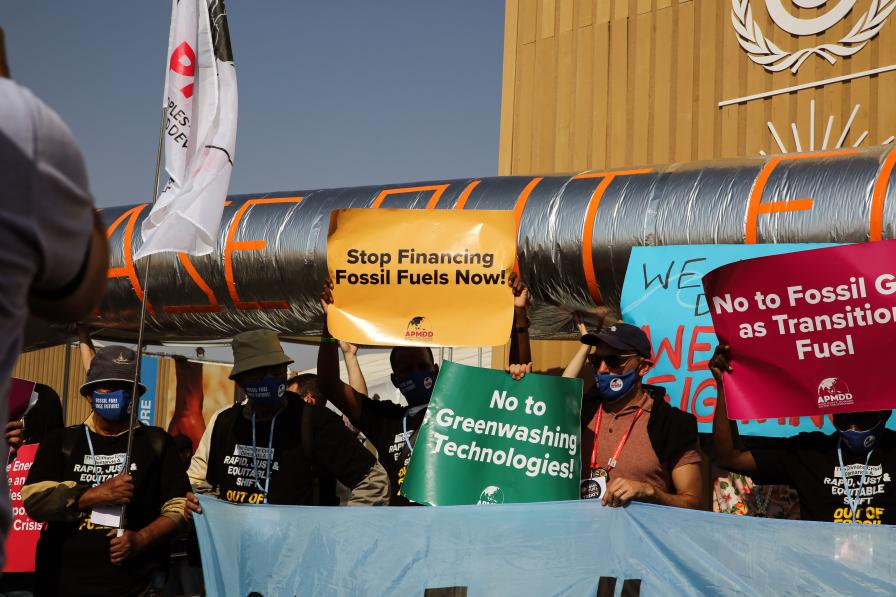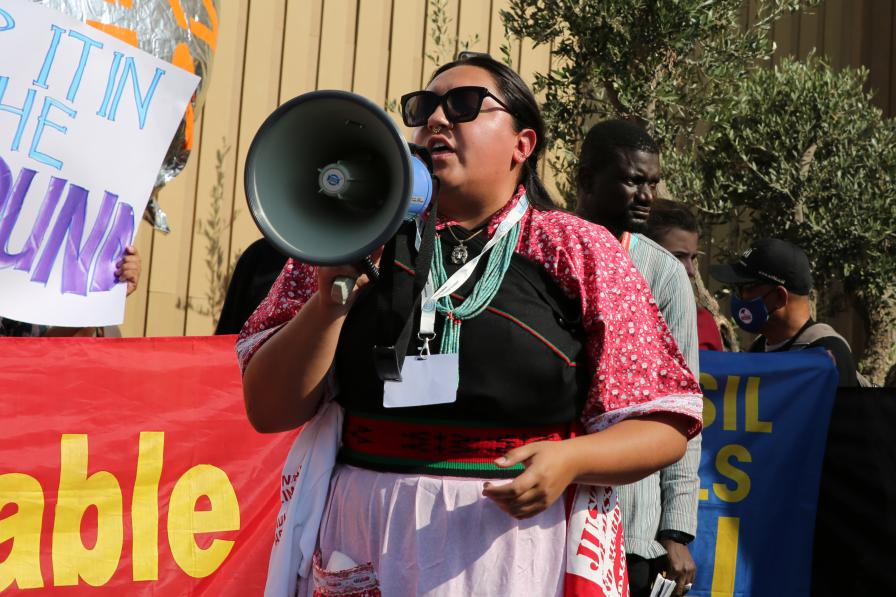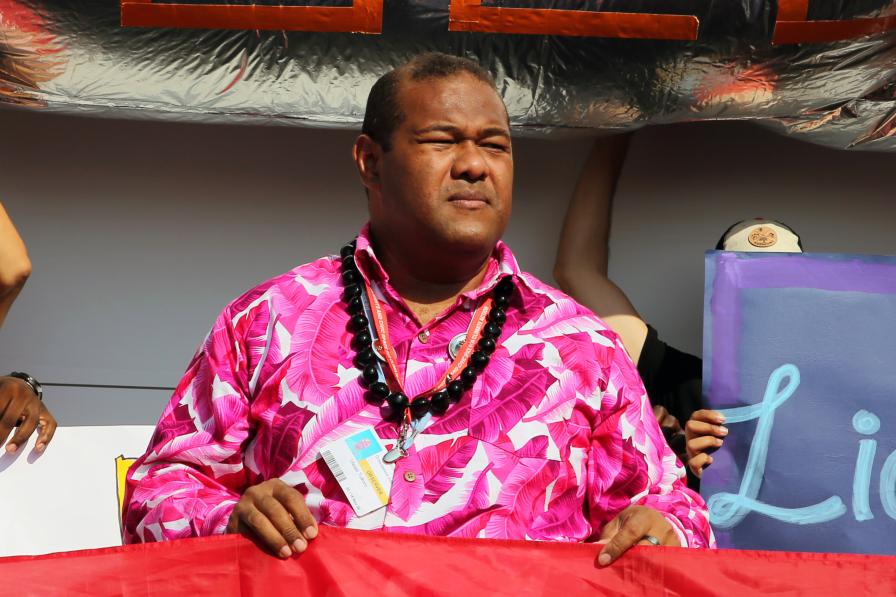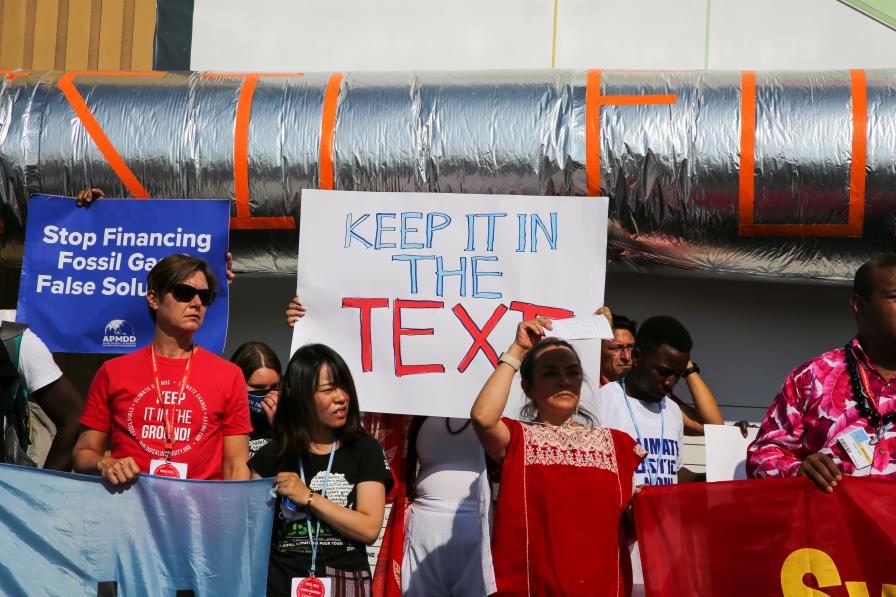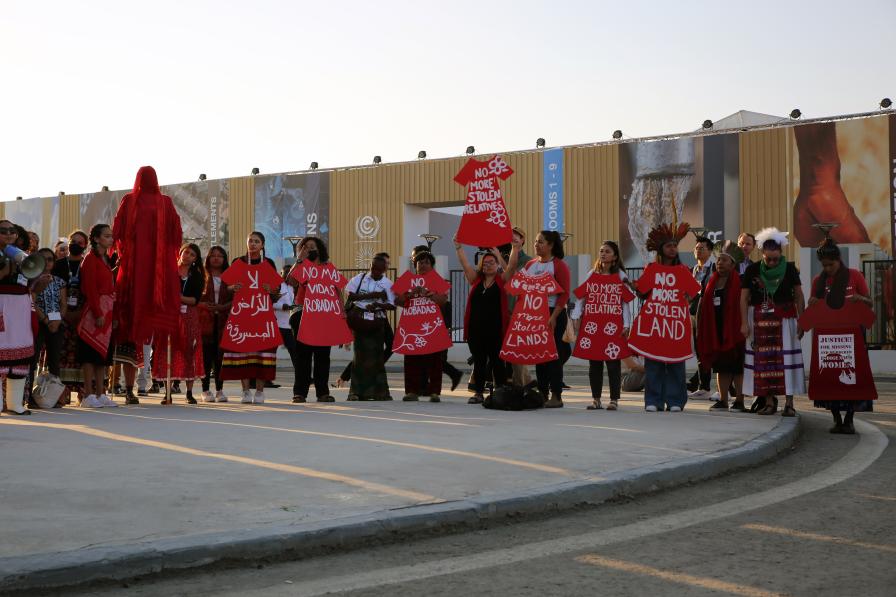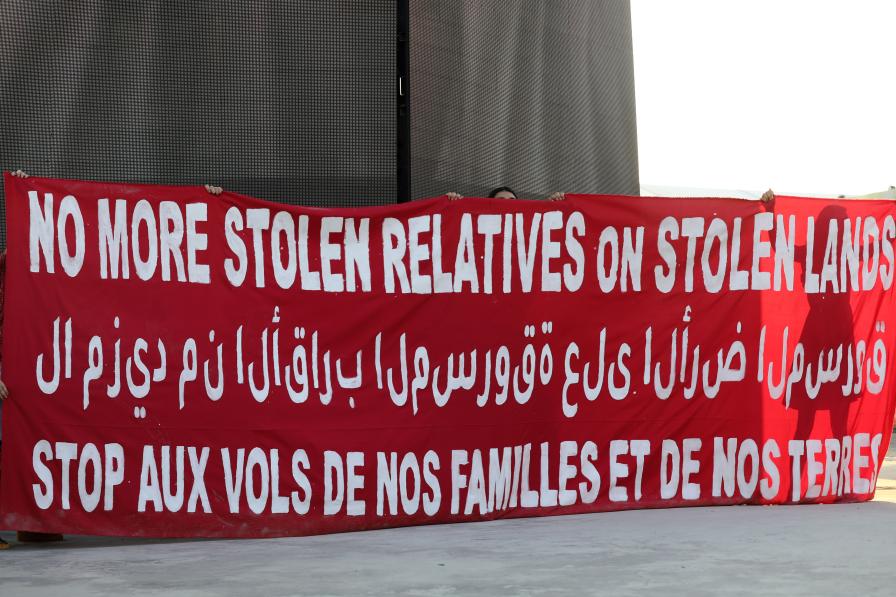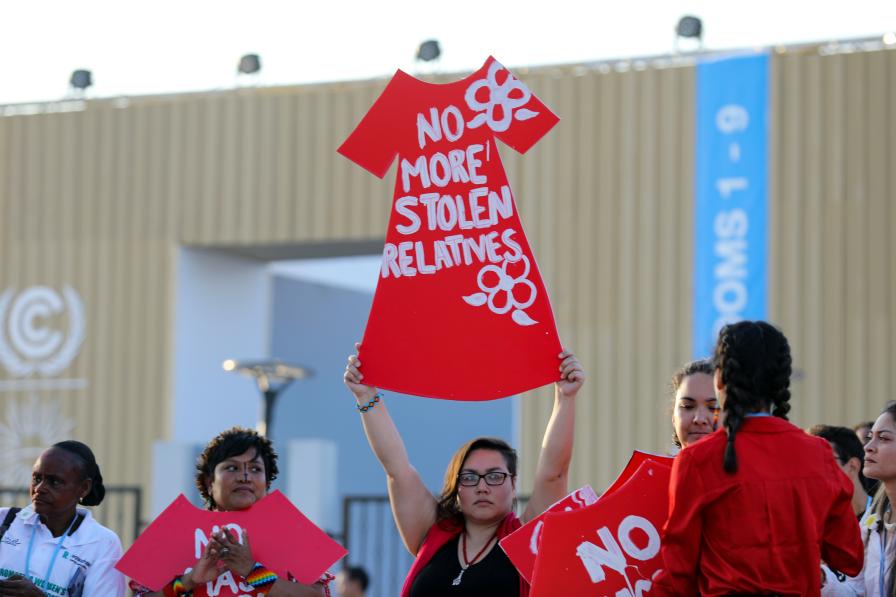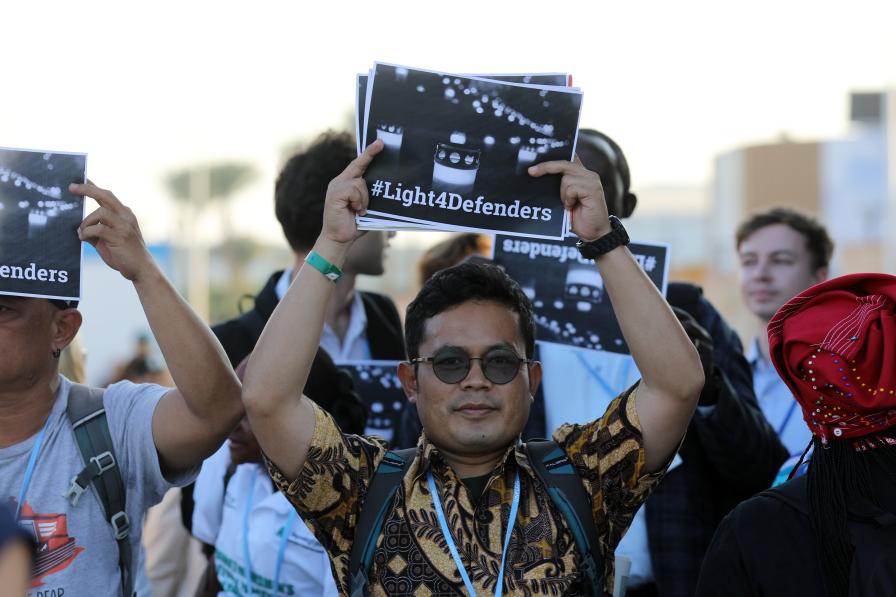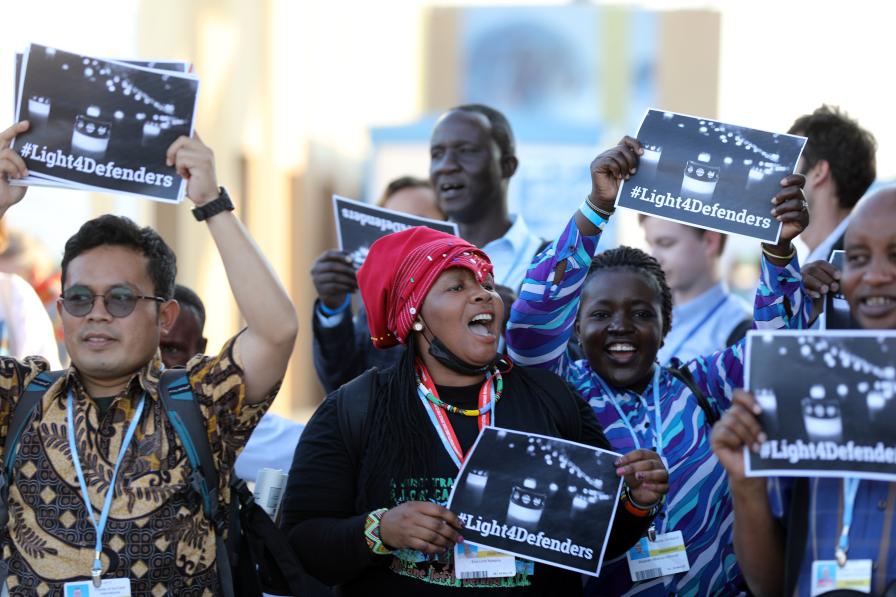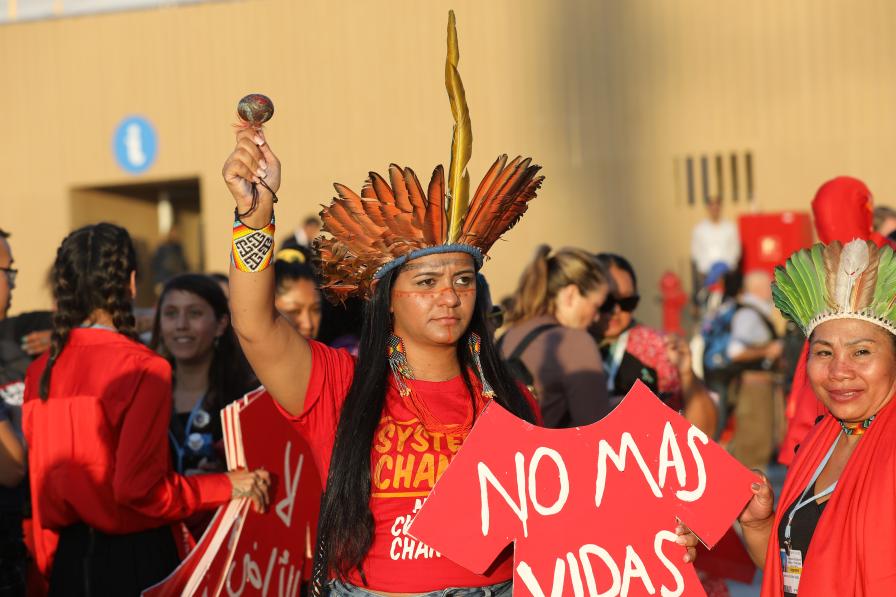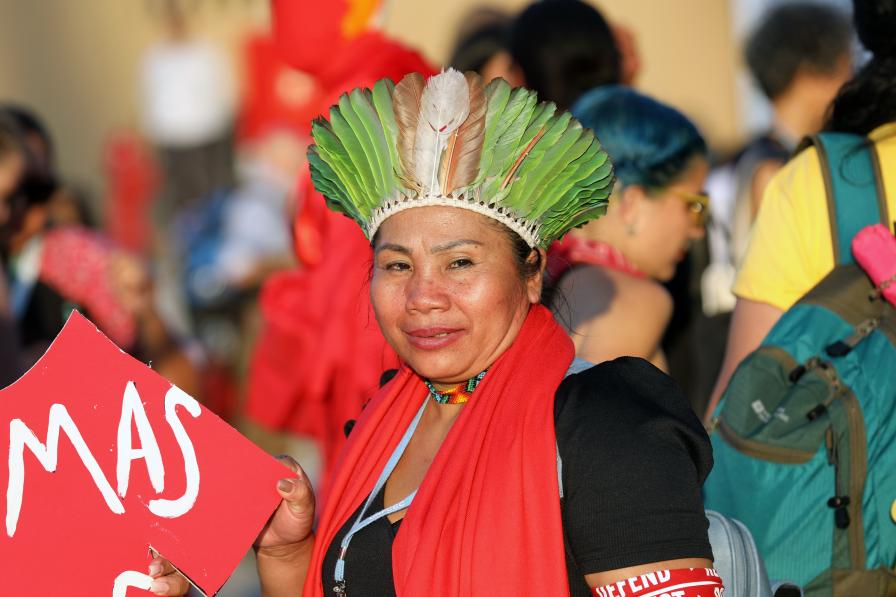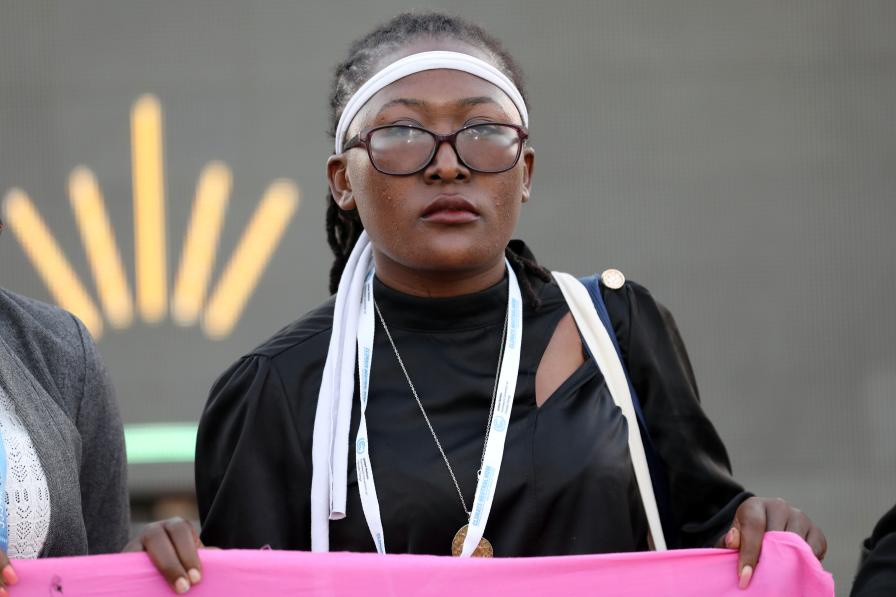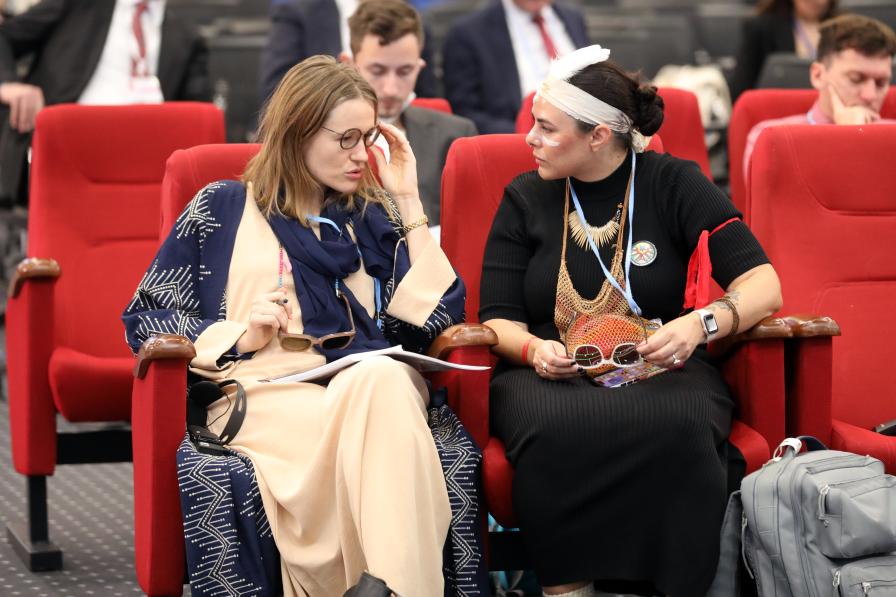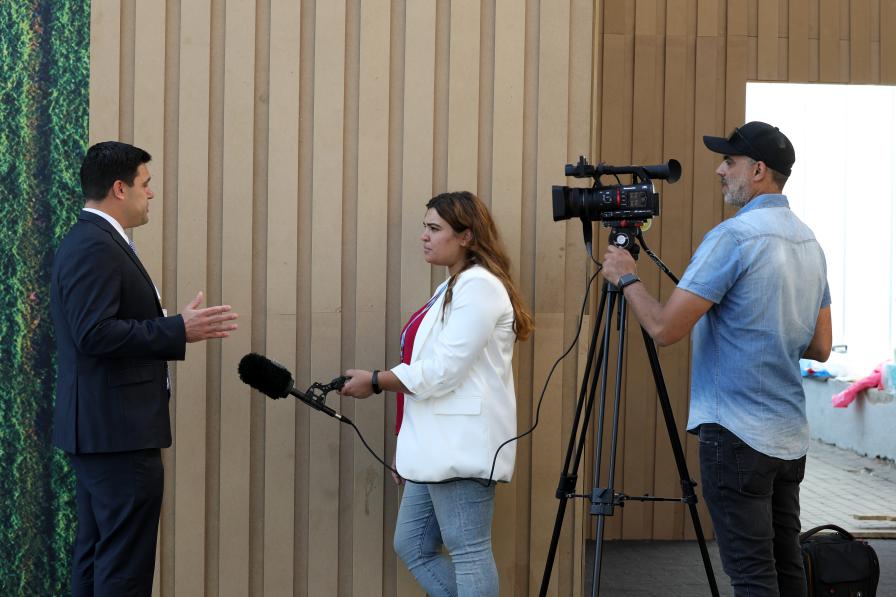Ministers gave high-level speeches and engaged in a small number of consultations, while delegates scurried between meeting rooms to try to resolve the backlog of technical issues remaining from the first week of the conference. By the end of the day, it was clear the ministers were about to be pulled into a wide range of remaining work.
The stakes—and responsibilities of this meeting—were made clear in high-level discussions. This implementation Conference of the Parties (COP) is “a moment to bridge the gaps between pledges and fulfillment” said Csaba Kőrösi, President of the 77th session of the UN General Assembly.
Want to dive deeper? Read the full Earth Negotiations Bulletin daily report in English, Français, Español, 日本語.
The authors of the UN Environment Programme’s (UNEP) Emissions Gap Report laid these gaps out in real terms: “inadequate progress” since Glasgow and current policies that suggest as much as a 2.8°C hike in global temperature. The finance gap, among others, has impacted the process and, as Fiamē Naomi Mataʻafa, Prime Minister of Samoa, explained, “We cannot afford the further erosion of trust between developed and developing countries.”
Negotiations
The schedule shifted throughout the day as some sessions disappeared from the live timetable. Some of these re-appeared on the schedule in the evening. For other issues, it was less clear as in some cases parties met in very informal settings. Many issues remained unresolved as brackets surrounding unagreed text remained, including on:
- Glasgow–Sharm El-Sheikh Work Programme on the Global Goal on Adaptation;
- Second review of the long-term global goal and progress toward achieving it;
- Koronivia Joint Work on Agriculture;
- Article 6; and
- Response measures.
At the same time, finance and markets negotiators worked throughout the day, rotating among issues. Article 6 delegates continued to plow through a large volume of technical work, much of which is crucial to enable the operationalization of international cooperation on carbon markets, including the successor of the Clean Development Mechanism known as the ‘Article 6.4 mechanism’, and on non-market approaches. The task is more political on finance, where progress proved slow. Many expect ministers to unlock agreements on these sticky and divisive items, in what’s now become a COP tradition.
COP 27 President Shoukry laid out his plan to help bring parties together on some, but not, all issues. Specifically, political discussions, facilitated by a pair of ministers, one from a developing and developed country each, will center on:
- The mitigation work programme;
- The Global Goal on Adaptation;
- The new collective quantified goal on finance;
- Article 6 and related issues; and
- Financing for loss and damage.
To receive free coverage of global environmental events delivered to your inbox, subscribe to the ENB Update newsletter.
All ENB photos are free to use with attribution. For the Sharm El-Sheikh Climate Change Conference, please use: Photo by IISD/ENB | Mike Muzurakis
